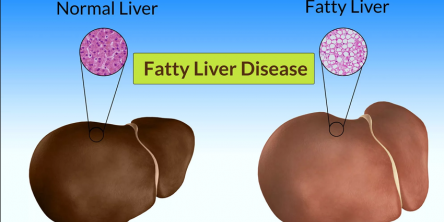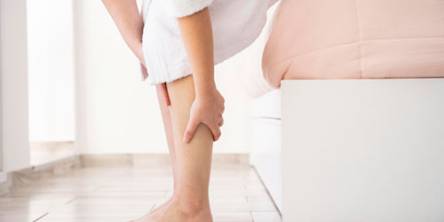Top 7 Proven Strategies to Speed up Back Surgery Recovery

If you have back surgery coming up soon, you should get ready in advance. You can better manage and even shorten your recovery after the surgery by preparing beforehand. When getting home after surgery, you must concentrate on critical elements of your recovery. This might entail doing something like eating well and getting adequate sleep, among other things.
Here are seven post-operative tips to help you heal more quickly following back surgery.
1. Proper nutrition
It's crucial to include the necessary foods in your diet if you want to hasten your recovery from back surgery. Processed foods, sugar-packed foods, and other things that might cause inflammation or compromise your body's natural ability to recover must be eliminated from your diet. Instead, increase your intake of whole foods and high-protein foods.
Your body needs lots of protein to heal your muscles after surgery since they are almost certainly injured. The rich nutritional content found in whole grains supports your immune system and reduces inflammation. Consuming fresh foods is equally vital. Such meals are a great source of vitamins and antioxidants, which help the body heal after surgical intervention.
Consider a delivery service to have your groceries delivered if you are unable to purchase or prepare meals on your own. Additionally, you may have ready-made food packages delivered to your house. If you reject getting food delivered, prepare nutritious meals ahead of time and freeze them.
2. Drinking enough water
It's critical to drink plenty of water after surgery. By doing this, it is possible to prevent postoperative complications such as vein thrombosis, pulmonary embolism, and bowel problems (constipation). Your immune system, which would typically be compromised after surgery, is supported by proper hydration. This facilitates the prevention of infections and hastens the healing process. Additionally, water aids in the removal of toxins left over from anesthesia.
You must buy numerous bottles of water in advance or have them delivered to your house. Your body weight in pounds divided by two will give you the daily recommended amount of water you should have on a daily basis.
3. Pain management
Your doctor will write you a prescription for painkillers before you leave the hospital following surgery. To properly manage discomfort, you need to have specific instructions from your doctor. You can speed up your healing and lessen suffering by using painkillers. Consider using a pill organizer to make sure you take all of your prescription medications on schedule because you could feel groggy after surgery. You may be able to avoid gaps in your pain management plan as a result.
You can employ natural treatments in addition to painkillers to hasten your recovery. Post-operative pain can be effectively managed with hot and cold therapies. Heat compresses promote healing, blood circulation, and muscle relaxation. Cold compresses reduce inflammation and alleviate pain at the surgical site. Apply the compresses for no more than 15 minutes at a time, and then wait at least two hours in between sessions.
4. Ensure the details are handled
Following major surgery, you might find it hard to perform certain daily activities like walking, cooking, or taking a shower. You need to take care of these little things in advance to make sure you're comfortable following treatment. Consider purchasing a walker and grabber device if you have trouble walking. Falls can be reduced and supported when you walk with a walker. You can reach objects with a grabber without bending or twisting.
A toilet riser is another thing that may substantially improve your comfort. The toilet seat is raised by this spherical piece of plastic that fits on the seat. You’d be able to get on and off the toilet more easily and comfortably as a result.
Pack a comfortable bed, pillows, and pajamas for yourself since lying down will be expected of you for most of the day following surgery. You may get a body pillow in addition to conventional pillows to help yourself improve your sleeping posture. You may find it simpler to glide into and out of bed if you are wearing pajamas made of silk or another smooth material.
Put a mini fridge around your bed before the procedure. This enables you to take some prescriptions while lying in bed and allows you to enjoy snacks, beverages, and other small meals without getting out of bed. Resting your spine will help it heal more quickly.
5. Plan ahead for entertainment
You'll need to spend a great deal of time resting in the bed post-surgery. It might be quite dull and substantially lower your mood. But if you want to hasten your post-surgery recovery, have a positive mentality.
Before the procedure, surround yourself with items that will keep you occupied, such as music, books, movies, magazines, crossword puzzles, and video games. You may purchase memberships to streaming services and watch your favorite movies on a TV, laptop, or smartphone.
6. Ask for help
It may be challenging to manage all household responsibilities on your own, particularly if you have a pet. After the procedure, ask your family or friends to remain with you for a couple of days. Ensure you have folks who can routinely visit you if they can't remain in the house with you. Having someone who can assist you with cleaning your home during the initial days is crucial.
To get to your appointments, ask a friend to pick you up or consider using a ride-sharing service. Don't try to drive by yourself, particularly if you're using prescription painkillers. If you have a dog or another pet, ask a friend to care for it while you heal. It will be difficult for you to care for your pet on your own, but time spent around your beloved dog may be beneficial to your overall health.
7. Get physical therapy
Physical therapy should be a part of your routine following surgery, even if you might have to rest more to heal at first. Based on the procedure, your doctor could even advise physical rehabilitation the day after the treatment. You can restore your physical endurance, flexibility, and strength with the aid of physical therapy.
A series of exercises for home use can be devised by the spine surgeon and physical therapist collaboratively. Get comprehensive illustrations and written instructions on how to carry out each movement safely. The doctor can modify the program to help you advance once you've fully recovered from the procedure.
The bottom line
Undergoing and recovering from spine surgery is a complicated process that needs you to make some preparations in advance. Make sure you have someone to drive you home and take care of you right after you awake from anesthesia. Don't forget to prepare some food and stock up on water in advance. Carefully follow your doctor's pain management instructions and take all your medications on time. When you’re healed up and ready to proceed with your treatment, consult your surgeon about the physical therapy curse needed after the specific procedure you have undergone.
Similar Articles
We often experience small discomforts or symptoms that seem insignificant, like headaches, fatigue, or brittle nails. Many times, we brush them off, thinking they’ll go away on their own. However, these minor issues might be your body’s way of telling you that something more serious is going on.
According to the World Health Organization (WHO), half to three-quarters of adult persons globally experienced a headache in the past year. Unfortunately, tension headaches are one of the most prevalent symptoms you can have. Furthermore, some tension headaches resemble migraine headaches, making matters worse.
The review of Yakrit Plihantak Churna is going to be amazing. You will know the facts, does it works along its benefits. The liver is the main engine of the body. It is the second largest gland in the body.
A podiatrist is a doctor who focuses on treating foot and ankle ailments. If you have specific medical issues, you may need to see a podiatrist for therapy that your primary doctor cannot offer. Don't overlook pain in your lower leg, foot, ankle, or toes.
A podiatrist is a medical expert who focuses on foot and ankle care. There are various reasons you may need to see one.
Swelling is a common issue that can strike anyone. Occasional leg swelling may occur after a long day on your feet or from sitting too long. However, if your legs are regularly swollen, it could indicate a serious underlying condition. Swelling can cause leg pain, loss of sensation, redness, and itching. If left unmanaged, it can lead to stiffness and difficulty walking.
Choosing the best aesthetic medicine courses will significantly boost your career. Medical professionals looking to expand their practice and stay ahead in the field of aesthetic medicine will find these training programs invaluable
Lower back pain is like a storm gathering over the horizon all day. The dull discomfort, the throbbing feeling, and the stiffness all add up until, like a thunderclap, it explodes into full-fledged pain. It penetrates your whole body, removing choice and control. Your mobility is restricted, making daily tasks difficult, and if not addressed, it can cause permanent damage.
Even though migraine affects over one billion people around the world, it has long been neglected as one of the most devastating diseases on the planet. Migraine headaches are a neurological disorder characterized by recurrent pounding or throbbing headaches, nausea and vomiting, and sensitivity to light, sound, and strong odors









